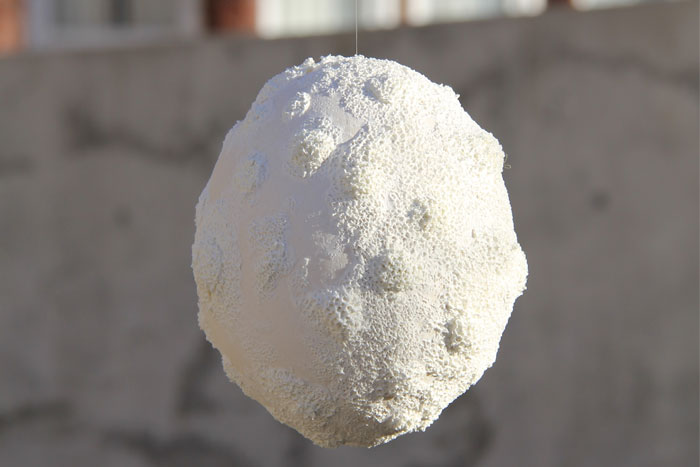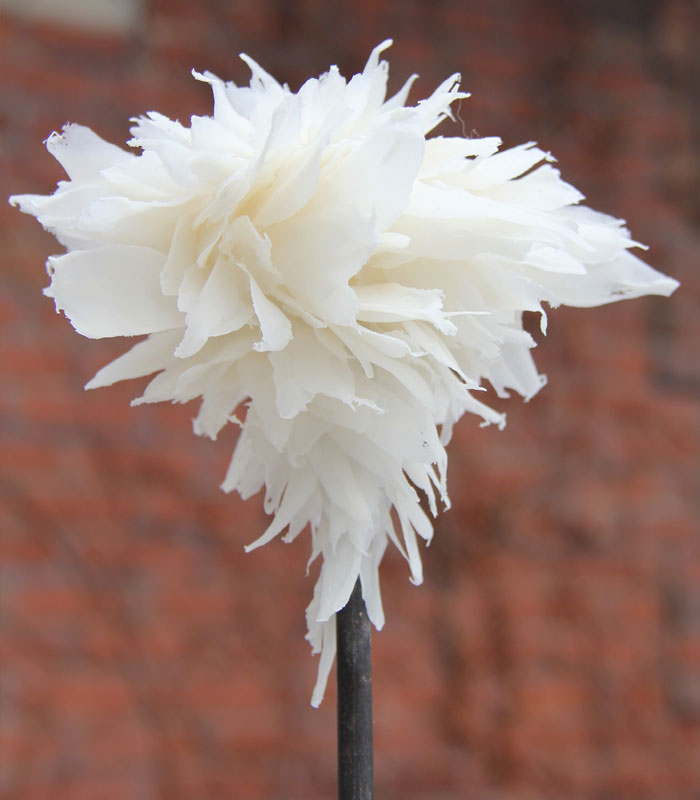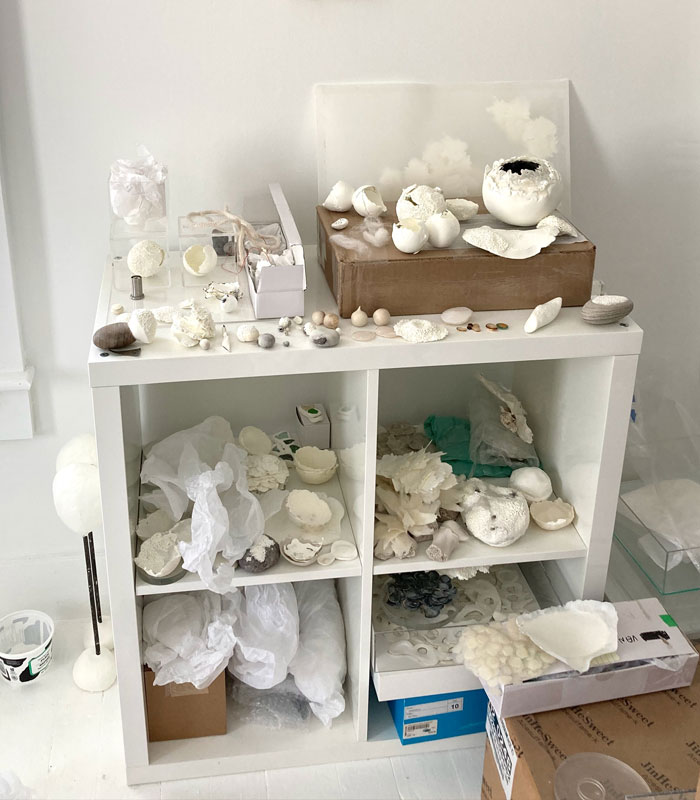Between fear and hope: An interview with artist Katja van den Enden
When we closed our doors for the first time in March 2020 as a result of the COVID-19 pandemic, the Gardiner Shop was in the midst of a retail exhibition by German-born abstract artist Katja van den Enden. Van den Enden, who lives and works in Newmarket, Ontario, has shown her work in public and private galleries for the past 15 years, and received awards from the Orillia Museum of Art and History, the Art Gallery of Mississauga, and the Latcham Gallery.
Last month, Van den Enden returned to the Shop with a new series of work inspired by the pandemic. Through an accumulation of almost perforated semi-spheres, the collection explores fear and hope, fragility and renewal. In a recent interview with the artist, she offered insight into her process, her relationship with clay, and what she’s working on next.

Mummified #3, 2020
How has your practice changed as a result of COVID-19? How is the pandemic reflected in your new collection?
When the pandemic hit, I had just had a solo show at Latcham Gallery and was featured at the Gardiner Shop shortly after, so I was in a really wonderful place and thought that the lockdown would just be a good time to work in peace. I normally work on more abstract themes around psychology, and had every intention to continue on that path, but that proved to be impossible.
There was a time when everything I started fell flat. It wasn’t just the pandemic itself that I couldn’t ignore, but all our brokenness bubbled to the surface. I felt as much horror as I felt hope. I needed to find a shape that reflected this, and ended up experimenting with semi-spheres that resemble broken eggs, only with more tender edges.
These pieces come together in circles or forms that open up. I wanted to take it further, so I perforated the semi-spheres until they became transparent. I didn’t have much hope that they’d be strong enough to work with—it was more of an exercise, an experiment that might lead to something interesting. Sure enough, a few of them fell on the floor, but to my great surprise none of them broke. This was a fascinating metaphor to me. It took me back to an earlier theme of ‘acceptance’, acceptance of fragility. I find a lot of hope in that, and that ignited the Broken series that I’m still exploring.
A number of the works in your Gardiner Shop exhibition are made from stone clay. What are the properties of stone clay and how does it lend itself to the aesthetic you’re trying to create?
Stone clay is made from marble dust and has a fine texture that resembles porcelain. It allows you to go very thin, but it can also handle sanding, carving, and drilling. I love how you can change the surface in a million ways. It’s an air-drying clay, so the shapes don’t melt into one another during firing. I have a feeling that it will be part of my work for a long time.

Aggregate State of Connectivity Stabil (detail), 2020
You create these incredibly delicate clay sculptures with what look like layers of petals or feathers. Where did that idea come from and what are you hoping to evoke?
As far as I remember, it started out with me wanting to make paper-thin sheets to be engraved with script. The outcome wasn’t exciting. I thought I needed to go even thinner, forgot about my scroll-and-script idea and followed the clay. My ideas are always part material-triggered, part concept-based. At the time I was mulling over the origin of creativity and mental growth. The small, raw flecks of thin clay looked to me like the hundreds of tiny thoughts that become an idea. That was the starting point, but it took a lot more experimenting with different shapes, textures, and the engineering side of things.
Some of your clay works incorporate hair or other fibers. What attracts you about that pairing?
It’s their juxtaposition. To me they are opposites that attract: clay being hard and inflexible (once dried) and hair and fibre being so soft and dynamic. They speak very different visual languages.
Your practice includes mixed media painting, drawing, collage, and sculpture, however much of your recent work is largely clay-based. What makes clay special or unique from other mediums?
Clay is unique in that it allows you to almost be one with the material. It connects you to your childhood, but also to this long line of creativity that came before us. Everything I’ve learned from other materials and processes can be integrated into working with clay, and clay embraces different materials. You can use any number of tools, but all you really need is your hands. There is so much freedom in that. I find this directness incredibly inspiring.
How do you feel when you see your work in someone else’s home?
I don’t get to see my objects in their new homes very often, but when I do it’s like your child has grown up and found its own place in the world. It feels amazing!

Katja van den Ended’s studio, 2021
What are you working on or experimenting with in your studio right now?
I’m exploring something I think of as ‘cocoon or confinement’. These are clusters that are enveloped in fibre rovings. They are still in process. It’s a really exciting time in the studio right now with maquettes all over the place.
Katja van den Enden’s work is currently featured in our online Gardiner Shop. Click here to see the full collection. Shipping and curbside pickup are available.